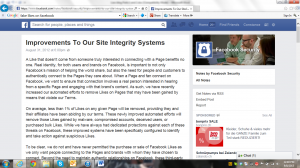
“Where are the gold pieces now?’ the Fairy asked.
‘I lost them,’ answered Pinocchio, but he told a lie, for he had them in his pocket. .” ― Carlo Collodi, Pinocchio
In a popular TED talk online, Pamela Meyer, author of Liespotting, asks whether we are living in a ”post-truth” society. She cites some surprising statistics about how often we lie and are lied to every day and then points out how early lying behavior begins. The trick, she said, is to recognize when we’re being lied to before we accept something as truth. If we don’t question the veracity of a statement, we’re enabling the liar and participating in the lie.
As a cultural anthropologist, she introduced several lesser-known ways of spotting the tell-tale non-verbal signs of lying, such as the liar’s feet often point toward the exit or the liar often places pens or other objects on the desk across from the interviewer like physical barriers. A video clip of a murderer illustrated what she called ”duping delight,” a proud, wicked grin that can’t be suppressed.
What liars say, not just how they say something, also can give clues to the fact that they’re hedging the truth. We need to listen for overly formal language, distancing language, qualifying language, fact recitation only in strict chronological order and an abundance of unnecessary, irrelevant information.
I’m no expert on lying, but I do know that white lies are a common convention in daily personal conversation. Similarly, in the business world, avoiding the truth — particularly when the truth hurts – can sometimes be seen as an art form.
In an age of open information, full disclosure now – to the extent possible – may prevent worse problems later.
Communications professionals, in particular, have to be adept at making sure the messages they disseminate are as close to the truth as the situation (and the legal department) will allow. In an age of open information, full disclosure – to the extent possible – now may prevent worse problems later.
The Chief Truth Teller in a company, however, has to be the person at the top of a company, who sets the standard for honesty and integrity in business dealings and communication and then enforces the expectation of truth among the company’s employees.
Are you the type of thought leader who demands that your followers face even the toughest truths?
Ask, assess, then act. We’re here to help (and that’s the truth)!
Photo credit: Favio Rava
 So how is a town hall meeting like a theater production or a church service? That’s not a clever riddle, but an actual comparison that came to mind during a sermon by a Zürich preacher who pointed out how a church service and a theater production were alike.
So how is a town hall meeting like a theater production or a church service? That’s not a clever riddle, but an actual comparison that came to mind during a sermon by a Zürich preacher who pointed out how a church service and a theater production were alike.










